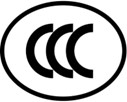Navigating China’s Complex Landscape of Consumer Product Labeling Requirements
As the world’s second-largest consumer market, China continues to refine its regulatory framework related to consumer products in an effort to enhance product quality and safety. The product label, which serves as the main mechanism to convey product information to consumers, has been the focal point of government supervision.
By way of background, the overarching law in China on consumer product labels is the Product Quality Law[1], applicable to all kinds of consumer products. It is stipulated in Article 27 that the product label must be true and must comply with the following requirements:
- Must show the certificate of conformity for product quality inspection[2]
- Must show the product name, and the name and address of the manufacturer, in Chinese
- According to the characteristics of the product and the use requirements, if it is necessary to label the product specifications, grades, and the identity and content of the main components, they must be marked in Chinese; if it is necessary to inform the consumers in advance, they must be marked on the outer package, or the relevant information must be provided to the consumers in advance
- For products that should be used within a time limit, the date of manufacture and the safe use period, or the expiration date, must be marked in a prominent position
- If, when the product is improperly used, the product itself can be easily damaged or may be harmful to personal safety or property, warning signs or Chinese warning statements must be labeled
Notably, China has established additional rules governing the labeling of certain types of products in other categories, such as, foods, cosmetics, medical devices, etc. For example, the Management Rules on Cosmetic Labels elaborate on the labeling items subject to mandatory declaration for cosmetics marketing in China. In addition, China’s GB 7718 and Measures for Supervision and Administration of Food Labeling are the two key documents in China that address food labeling. More details concerning the above product categories can be found in our CRMs – Two Chinese Food Agencies Release Drafts of New Food Labeling Requirements and The Changing Face of Cosmetics in China: Challenges and Opportunities for China’s Reformed Regulatory Framework.
In addition to the basic labeling items specified under the Product Quality Law, the applicable national/industry standards may require additional information to be declared on the product label. For example, GB 4943.1-2022 Audio/video, information and communication technology equipment - Part 1: Safety requirements[3] sets forth detailed requirements concerning on-product markings and instructional materials for wireless headphone products marketing in China. Business operators should ensure that their Chinese product labels are fully compliant with the applicable national and industry standards.
Other Labeling Requirements
Under the regulatory framework for consumer product labels, business operators must also consider a myriad of additional requirements that go beyond the basic requirements of the Product Quality Law and applicable national and industry standards noted above. For example, one of the most prominent labeling requirements is the China Compulsory Certification (CCC) mark, which is a compulsory safety and quality mark for many consumer products sold on the Chinese market, including household and similar electrical appliances, motor vehicles, etc. The Management Requirements for CCC Mark[4] provide detailed guidelines on how the CCC mark (see below) should be displayed.

Another critical aspect of labeling in China pertains to the declaration of hazardous substances in electrical and electronic products. Specifically, per the Management Measures for the Restricted Use of Hazardous Substances in Electrical and Electronic Products[5] and its Q&A document[6], electronic appliances (e.g., kitchen appliances) should declare hazardous substances contained in products, including name, content, components and whether the products can be recycled, as well as information on the impact that improper use or disposal may have on the environment and human health. This requirement underscores China’s commitment to environmental protection and consumer safety.
In the meantime, for devices from the telecommunications sector that use radio technologies (Wi-Fi, WLAN, NFC, Bluetooth, etc.), there is an additional pre-market registration requirement under the Regulations on the Management of Radio Operation[7], namely Radio Transmitting Equipment Type Approval (i.e., SRRC certification). Notably, it is necessary to declare the approval code of the certificate, known as CMIIT ID, on the product.
The examples above merely illustrate a few of the many mandatory labeling requirements that consumer products are subject to in China. Considering the above, the industry should ensure full compliance with all applicable labeling rules when conducting business in China.
Future Development
In October 2023, China proposed a draft amendment [8] of the Product Quality Law, under which Article 14 proposes additional labeling requirements for products. For example, regarding domestically manufactured products, the draft now necessitates the declaration of the actual place of production information. Consumer product enterprises should be aware of this amendment since, once finalized, it may have a significant impact on the labeling of products marketed in China.
Should you have any questions about China’s regulatory requirements for consumer products, or other product categories, please do not hesitate to contact David Ettinger (ettinger@khlaw.com), Eric Gu (gue@khlaw.com), Sharon Tian (tian@khlaw.com), or your existing contact at Keller and Heckman LLP.
[1] http://www.npc.gov.cn/zgrdw/npc/xinwen/2019-01/07/content_2070255.htm
[2] This requirement usually can be fulfilled by marking Chinese characters such as “conformity” on the label.
[3] https://std.samr.gov.cn/gb/search/gbDetailed?id=E4A2A4C875736A5DE05397BE0A0A61E8
[4] https://www.cnca.gov.cn/zwxx/gg/2023/art/2023/art_926495084f4740b792f914829b1be5c5.html
[5] https://www.gov.cn/gongbao/content/2016/content_5065677.htm
[6] http://gxt.jl.gov.cn/xxgk/zcwj/zcfg_zcjd/201607/P020160701446548221616.pdf
[7] https://www.gov.cn/zhengce/content/2016-11/25/content_5137687.htm
[8] https://www.samr.gov.cn/hd/zjdc/art/2023/art_60a10db954cf45db88275cd3eebd62d3.html